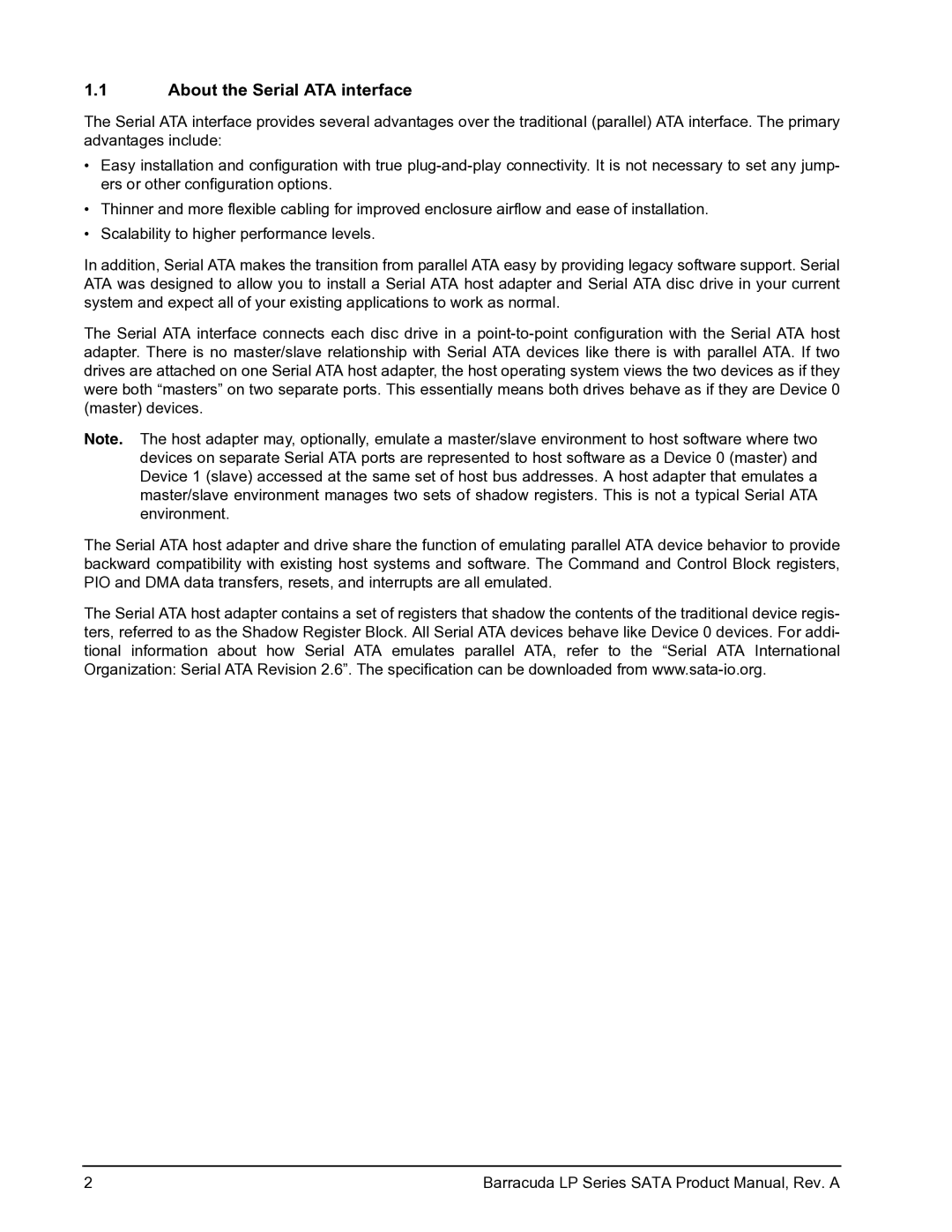ST32000542AS, ST31000520AS, ST31500541AS specifications
Seagate has long been a prominent player in the hard disk drive (HDD) market, and their SATA drives have earned a reputation for reliability and performance. Among their notable models are the ST31500541AS, ST31000520AS, and ST32000542AS, each offering unique features and technologies that cater to various storage needs.The ST31500541AS is a 1.5TB SATA drive known for its robust data handling capabilities. Operating at 7200 RPM, it offers a data transfer rate of up to 6Gb/s, making it suitable for demanding applications that require quick access to large files. This model features Seagate’s perpendicular recording technology, which increases storage density and efficiency. With an average seek time of 8.5 ms, users can expect swift performance for both read and write operations. Its 32MB cache also aids in enhancing data transfer rates and minimizing lag during data retrieval.
Next is the ST31000520AS, a 1TB drive that combines performance with energy efficiency. Also spinning at 7200 RPM, this model exploits Seagate's Advanced Power Management technology, which helps reduce power consumption and extend drive longevity. The ST31000520AS is particularly appealing for users looking to balance performance with energy costs. It features similar specifications to the ST31500541AS, including a 6Gb/s interface and a 32MB cache, ensuring that users can manage large workloads effectively.
Lastly, the ST32000542AS offers a compelling 2TB storage solution. This model caters to users with extensive storage needs, whether it be for multimedia content, backup solutions, or database management. Like its predecessors, it runs at 7200 RPM and benefits from Seagate's innovative technologies, including error correction and data recovery enhancements. With increased storage capacity and performance, this model is particularly suited for both personal and professional setups where data loss is not an option.
In summary, the Seagate ST31500541AS, ST31000520AS, and ST32000542AS exemplify the company's commitment to delivering high-performance hard drive solutions. With their emphasis on speed, energy efficiency, and advanced technologies such as perpendicular recording and power management, each model stands out in its capacity range, making them valuable assets for users seeking dependable storage options. Whether you're a gamer, a creative professional, or need a reliable backup solution, these drives are engineered to meet diverse computing needs with ease.
